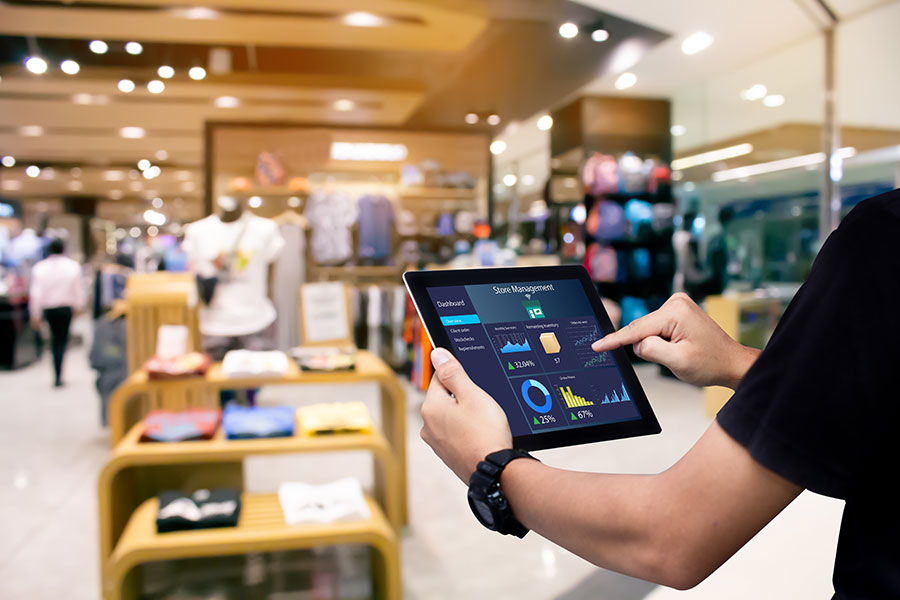Retailers see it every day: customers expect smoother, more relevant experiences that are tailored to their preferences. But in reality, few organizations have the tools, coordination, and especially the data needed to meet this demand.
Personalization cannot be decreed; it must be built through interactions, weak signals, and the ability to activate data at the right time, on the right channel. This means going beyond classic segmentation or generic campaigns.
Some approaches already in use in retail demonstrate how to leverage data without complicating the customer journey. Through four key trends, new, more refined, reactive, and behaviorally aligned personalization methods are emerging.

Data for personalization: an underused potential in retail?
Why is personalization becoming a top priority for customers?
Expectations for personalized experiences keep growing. Today, 73% of customers expect brands to understand their needs and offer tailor-made interactions. And this demand isn’t just a marketing “plus”: it directly influences purchasing decisions. Nearly 78% of consumers are more likely to repurchase from a company that personalizes their experience.
But this desire for personalization is not always met. Only 15% of CMOs believe they are on the right track. This gap creates a huge opportunity for retailers. And the stakes are strategic: relevant personalization increases customer loyalty by 49%.
Conversely, poorly targeted efforts can damage brand image. Nearly a quarter of consumers report receiving recommendations for products they’ve already bought. This misstep creates a counterproductive effect by reinforcing the sense of disconnected marketing. In other words, an impersonal customer experience makes a brand invisible to the consumer.
What role does data play in enhancing the customer experience?
To meet these expectations, retailers now have a key lever: data. Every interaction (browsing, purchases, campaign responses, etc.) feeds a base of information that, when used correctly, helps refine customer journeys without adding friction.
En amont, elle aide à comprendre les intentions : pages consultées, recherches, interactions sociales… Ces signaux permettent d’adapter les contenus ou les offres, parfois dès la première visite.
Upstream, it helps identify intent: pages viewed, searches made, social interactions… These signals allow content or offers to be adapted sometimes from the first visit.
During the purchase, it simplifies the journey: product suggestions based on preferences, anticipated delivery options, integrated advice online or in-store.
After the purchase, it enables more relevant engagement: useful recommendations, targeted follow-ups, content tailored to context or history.
The goal is not to personalize everything, but to do so where it makes sense. It’s not the amount of data that creates value, but the right activation at the right moment.
Behavioral segmentation: from traditional profiling to real-time activation
Segmenting customers by age or average basket size is still useful… but far from sufficient. Such static segmentation doesn’t reflect behavior evolution or real-time signals.
Today, the most agile brands are shifting to dynamic segmentations fueled by real-time data. Every click, search, or cart addition becomes a usable signal. It’s no longer about static profiles, but continuously updated observed actions.
Tools like Customer Data Platforms (CDPs) unify data from various channels (web, mobile, in-store). The result: a customer can automatically join a “high intent” segment after viewing a product multiple times, or be removed from an active segment after a period of inactivity.
Conversational AI: from chatbots to self-learning smart agents
In retail, conversational agents have made major strides. We’ve moved far beyond basic scripts offering canned responses. Today, powered by AI, some bots understand natural language, detect customer intent, and tailor responses based on history and preferences.
This adaptability depends directly on data. Every question asked, every choice made, every past interaction enriches their learning base. The richer and better-structured the data, the more precise and relevant the conversational AI becomes.
Brands use these bots for both customer service and sales support. Order tracking, product choices, cart help: these bots handle more and more interactions especially during busy periods or outside business hours while still offering a satisfying level of personalization.
Smart automation: when CRM data meets the right signals
Effective marketing automation hinges on one thing: connecting what you know about a customer to what they’re doing now. This is exactly what happens when CRM data is combined with behavioral signals.
CRM data provides structure: loyalty status, declared preferences, purchase history. Add to this recent behaviors: browsing categories, abandoned carts, prolonged inactivity. Combining both enables personalized actions to be triggered without human intervention. These automations go beyond email: brands activate mobile push notifications, SMS, personalized web content, even in-store messages. Each channel is used based on context and customer profile.
When CRM and behavioral data are synchronized across channels, the result is a unified customer view. The ability to activate the right data at the right time, with the right message, is what makes real-time behavioral segmentation meaningful. CDPs help by collecting and unifying data from various sources to ensure optimal personalization. And the performance results speak for themselves: open rates, clicks, and conversions all rise significantly when messages are triggered by real behavior—not a calendar.
Selling without pushing: product recommendations put to the test
Recommendation engines analyze shopping and browsing behavior to suggest the most relevant products based on a customer’s profile. Two methods are often combined: suggesting what similar customers bought, or showcasing items related to previously viewed products.
These systems draw on diverse data: past purchases, viewed products, cart additions, declared preferences… plus broader trends from all users. Some models even include predictive logic: if a customer replaces their sneakers every 18 months, the algorithm can anticipate a new purchase around that time.
In e-commerce, these recommendations appear directly on pages: personalized carousels, post-purchase suggestions, targeted emails. In-store, some retailers test systems via tablets, sales associates, or interactive kiosks connected to the customer profile, replicating the personalization logic in a physical space.
But the benefits go beyond single transactions. A recommendation aligned with the customer’s tastes strengthens the sense of brand closeness. Over time, this relevance drives loyalty, especially if suggestions are integrated into the relationship journey: post-purchase emails, mobile app alerts, notifications about new collections aligned with preferences.
The more accurate the recommendations, the less they feel intrusive and the more they are perceived as a service rather than a sales tactic. This balance is key to the long-term effectiveness of these tools.
Retail & Data: what constraints should be anticipated during implementation?
These innovations require some precautions. First, from the customer experience perspective: if personalization is too obvious or poorly explained, it can be poorly received. It is essential to inform users and let them manage their preferences.
From a regulatory standpoint, the phasing out of third-party cookies is pushing brands to build their own databases: customer accounts, mobile apps, loyalty programs. These sources will be crucial to maintain individualized relationships.
Finally, to use these tools daily, teams must be trained, engaged, and properly equipped. The challenge isn’t technological it’s organizational: ensuring data flows freely, uses are clear, and every role sees a tangible benefit in their work.
Similar Insights
-
IBM Power Week 2025: What You Need to Know
The 2025 edition of IBM Power Week highlighted the convergence between AI-assisted software engineering, IBM […]
December 1, 2025
-
Hardis Group obtains Google Cloud certification in Data Analytics
This recognition validates the Group's expertise across the entire analytics value chain, supporting more structured, […]
April 30, 2025
-
Data strategy to grow sales by capturing, analyzing, and exploiting retail data

